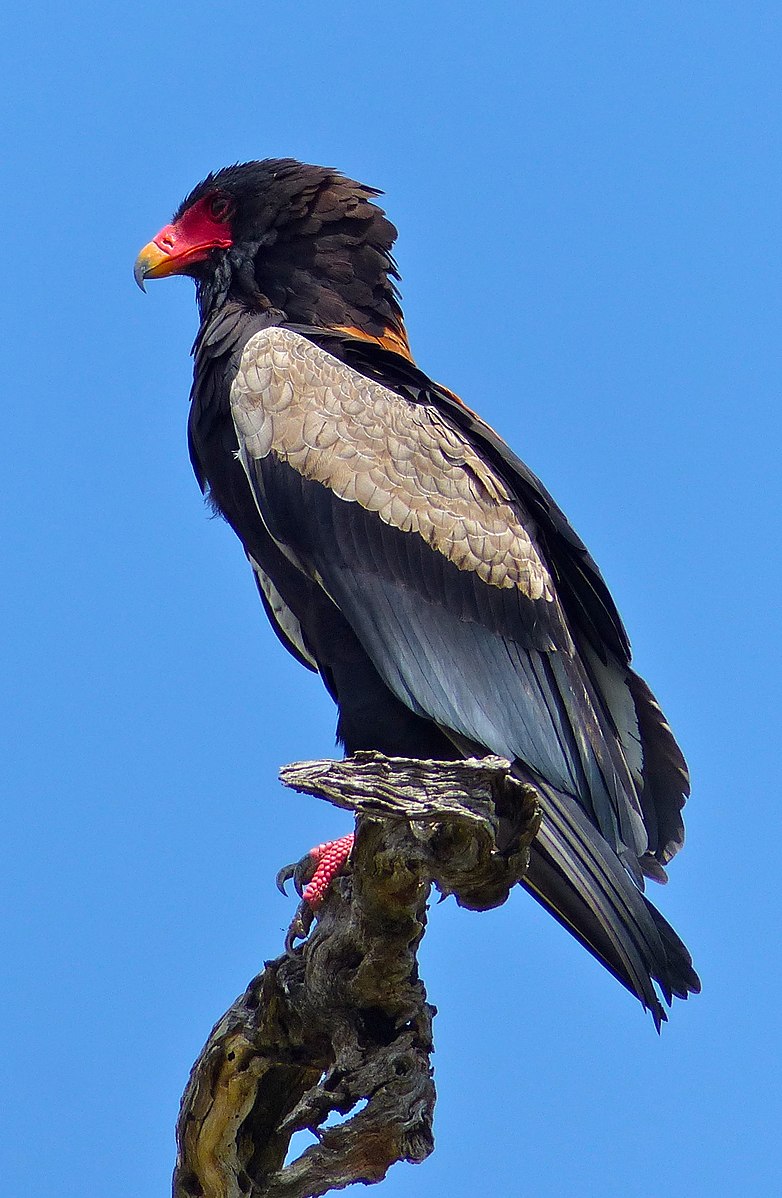Bateleur eagles are known to be highly adaptable in their feeding habits, often changing their methods between live predation, scavenging on carrion, and piracy. They are dietary generalists, with a wide range of prey species, and can spend up to 8-9 hours or up to 80% of daylight on the wing, covering distances of 300 to 500 km (190 to 310 mi) in a single day. Bateleurs are highly effective at discovering carrion at all times and often are the first to come to large carcasses.
Frequency of Feeding
There is no specific data or research on the exact frequency of how often bateleur eagles eat. However, based on their hunting and scavenging habits, it can be inferred that they eat as often as they are able to find food, which can vary depending on their location and the availability of prey.
Some key points about the feeding frequency of bateleur eagles:
- Bateleurs are known to be opportunistic feeders, taking advantage of any available food sources, whether it’s live prey or carrion.
- They can spend up to 80% of their daylight hours on the wing, actively searching for food over large areas.
- Bateleurs are highly efficient at locating and accessing carrion, often being the first to arrive at large carcasses.
- Their diet is diverse, including birds, small mammals, reptiles, insects, and more, allowing them to adapt their feeding to the available resources.
- Breeding pairs and their offspring may feed more frequently during the nesting and fledgling periods to support the increased energy demands.
Hunting and Scavenging Behavior
 Image source: Bateleur Eagle By Bernard DUPONT
Image source: Bateleur Eagle By Bernard DUPONT
Bateleur eagles are highly aerial and spend much of their time soaring, hunting from swift, direct gliding flight across the country or in wide sweeping circles. They are known to scavenge dead animals, including road-killed animals like birds, lizards, and small mammals. Bateleurs also actively hunt small vertebrates, especially snakes, as well as mammals and birds, including doves, hornbills, and kingfishers.
Hunting Techniques
- Soaring and gliding flight to spot potential prey from above
- Swift, direct flight to pursue and capture live prey
- Scavenging on carrion and road-killed animals
- Piracy, stealing food from other predators or scavengers
Prey Species
Bateleurs have a diverse diet that includes:
- Birds and their eggs
- Small reptiles
- Small mammals
- Insects (such as termites and locusts)
Feeding Behavior
- Bateleurs are known to be highly adaptable in their feeding methods, switching between live predation, scavenging, and piracy.
- They are often the first to arrive at large carcasses, taking advantage of the available food source.
- Breeding pairs and their offspring may increase their feeding frequency during the nesting and fledgling periods.
Breeding and Feeding
Bateleur eagles are monogamous and mate for life, with breeding seasons varying across their range. They lay only one egg at a time, with incubation lasting around 55 days, mainly by the female. Fledglings are ready to leave their nest about 110 days after hatching, and parents continue to feed them for another 100 days. Bateleurs reach full maturity at seven or eight years of age.
During the breeding and nesting periods, bateleur eagles may need to increase their feeding frequency to support the increased energy demands of their offspring. The parents will need to provide more food to the chick as it grows and develops, until it is able to fend for itself.
Conclusion
In summary, while there is no specific data on the exact frequency of how often bateleur eagles eat, it can be inferred that they eat as often as they are able to find food, which can vary depending on their location and the availability of prey. Bateleurs are highly adaptable and opportunistic feeders, taking advantage of a wide range of prey species and food sources, including live hunting and scavenging on carrion. Their feeding frequency may increase during the breeding and nesting periods to support the energy demands of their offspring.
References:
– Bateleur Eagle Fact Sheet
– Bateleur Eagle on Wikipedia
– Bateleur Eagle on Animalia
– Bateleur Eagle on The Peregrine Fund
– Bateleur Eagle at the Los Angeles Zoo


